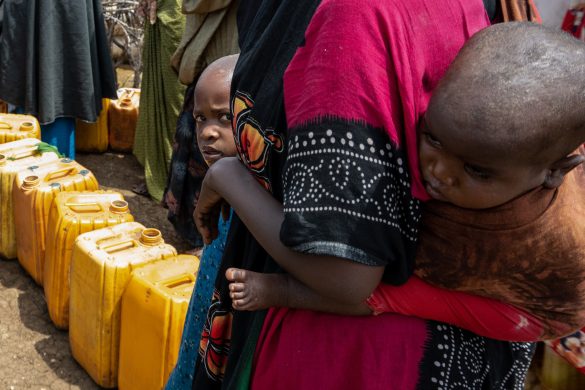Myndigheder og nødhjælpsorganisationer forbereder sig på det, der tegner sig til at blive endnu en oversvømmelse i Senegal. Den årlige regnsæson nærmer sig, og truer med at ødelægge huse og veje. Men er forberedelserne nok?
DAKAR/PIKINE, 7 June 2013 (IRIN) Experts from the African Centre of Meteorological Applications for Development (ACMAD) said that countries in the western Sahel zone will likely experience above-average rainfall between July and September this year, and Senegal could experience flash flooding.
Many residents of Dakar and its suburbs – particularly the neighbourhoods of Pikine, Guediawaye and Keur Maseur, which are built on low-lying coastal wetlands – are likely to face flooding this year. These neighbourhoods were built up in the 1970s, and their populations have since exploded. High water tables, inadequate drainage systems and over-population mean that even small amounts of rain can flood entire neighbourhoods.
According to Ndeye Diallo, who has a house in Keur Maseur, the homes of many families living there are still flooded from the 2012 rains. “The rains never receded,” she said.
Ndeye Touré, 47, who lives in Pikine, one of the worst-hit areas, said she and her neighbours have been promised help, but it never arrives. “For more than three months, we must live with water in our homes and the streets. Sometimes it comes up to your knees. The floods destroy our homes. Every year, the authorities promise to build us a canal to drain the water, but so far nothing has been done.”
Action Taken
The Senegalese government has undertaken several flood action plans over the years. Following heavy flooding in 2005, it implemented Plan Jaxaay, which re-housed 1.700 flood-hit families, according to the government’s website.
Four reservoirs were built in the suburbs to try to drain water from the area, and four more were planned by the Ministry of Urban Planning for Dakar. But residents of Pikine, the site of one of the reservoirs, said while it has lessened the impact of the flooding, it overflows every year, and because canals are blocked, flood-water cannot even reach it.
Clearing drainage systems has been the priority of the September 2012 urban development plan, known as the Rainwater Management and Adaption to Climate Change Project (PROGEP), which was launched in partnership the World Bank. Under this ambitious project, the government says it will invest 1,4 billion dollars over the course of 10 years in flood management projects, with 132 million allocated for 2013.
Amadou Fall Diop, director of the Project for Social Housing and the Fight Against Slums in the recently created Ministry of Restructuring and Management of Flood Zones, said that since September 2012, they have been focusing on short-term flood preparation, including clearing draining systems, ensuring pumping stations are working, and moving some families. They will engage in several long-term projects, including building more reservoirs and canals, over coming years, he said.
“We are doing as much as we can given our resources, and so we are asking the people that are impatient – that have reason to be impatient – to trust that we will find a solution to these floods,” he said. “Our plans are now underway.”
Læs mere her: http://www.irinnews.org/report/98183/senegalese-gear-up-for-likely-flooding
Start ved: Trash














